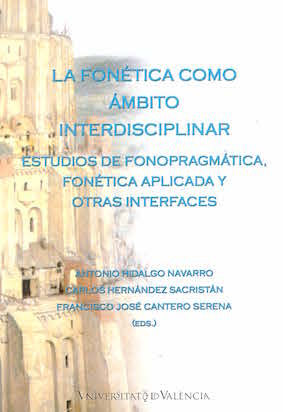El redondeamiento consonántico en bereber y sus propiedades fonéticas
DOI:
https://doi.org/10.7203/qfilologia.19.5185 Resum
Resum
La labialització consonàntica o el que convindria millor cridar el arrodoniment consonàntic és, juntament amb la faringalització i la tensió consonàntica, un dels trets fonològics característics de la llengua berber. Si la fonologització d'aquest fenomen fonètic queda ben establerta en berber, les seves propietats fonètiques, no obstant això, estan encara per esclarir. No se sap amb certesa si fonèticament es tracta d'una doble articulació o d'una co-articulació d'una consonant amb una vocal arrodonida sabent que el berber, malgrat tot, segueix sent una llengua oral. L'anàlisi espectrogràfic que hem realitzat
ens permet afirmar que es tracta d'una perfecta doble articulació.
Paraules clau: berber; arrodoniment consonàntic; doble articulació.
 Descàrregues
Descàrregues
Descàrregues
Publicades
Com citar
-
Resum395
-
PDF (Español)282
Número
Secció
Llicència
 Este obra está bajo una licencia de Creative Commons Reconocimiento-NoComercial-SinObraDerivada 4.0 Internacional.
Este obra está bajo una licencia de Creative Commons Reconocimiento-NoComercial-SinObraDerivada 4.0 Internacional.
Tots els documents inclosos a OJS són d'accés lliure i propietat dels seus autors i/o institucions editores, i per tant, qualsevol acte de reproducció, comercialització, comunicació pública o transformació total o parcial necessita el consentiment exprés i escrit d'aquests.
Authors who publish with this journal agree to the following terms:
- Authors retain copyright and grant the journal right of first publication with the work simultaneously licensed under a Creative Commons Attribution License that allows others to share the work with an acknowledgement of the work's authorship and initial publication in this journal.
- Authors are able to enter into separate, additional contractual arrangements for the non-exclusive distribution of the journal's published version of the work (e.g., post it to an institutional repository or publish it in a book), with an acknowledgement of its initial publication in this journal.
- Authors are permitted and encouraged to post their work online (e.g., in institutional repositories or on their website) prior to and during the submission process, as it can lead to productive exchanges, as well as earlier and greater citation of published work (See The Effect of Open Access).



